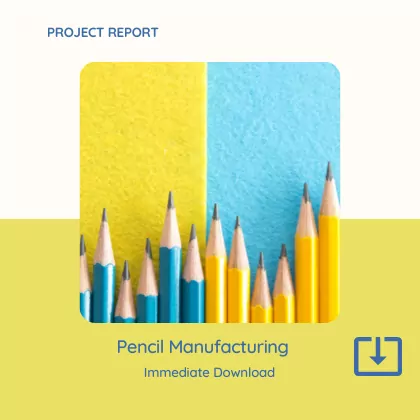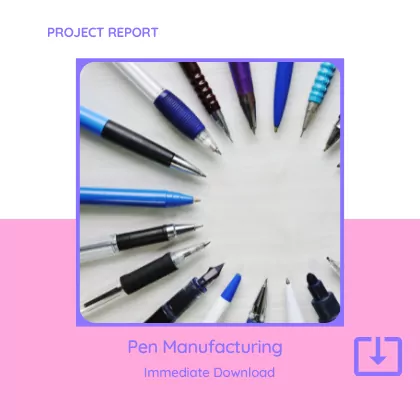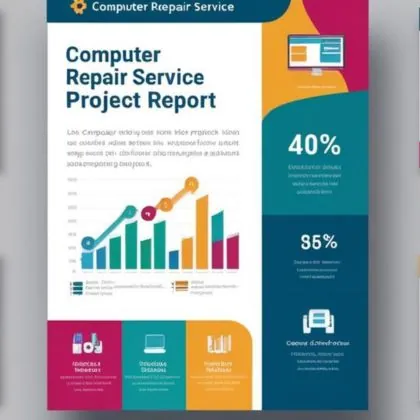Description
You can download the sample format of the Stationery Shop Project Report here. The project report aims to prepare a project report for a bank loan and other works. Project reports are useful for getting information about a stationery business. You can download the report for a small fee.
The stationery business is to fulfill the requirement of stationery of schools, colleges, offices, and all companies.
There is a huge scope of stationery business in India. Paper items include note pads, long books, winding books, etc. Non-paper stationery includes pencils, pens, publication hues, etc. Both paper items and non-paper stationery have a big scope in India.
The stationery business has developed due to an increase in education and tuition-based schools. The demand for premium stationery by corporate and workplaces has led to the development of the stationery business.
Stationery Shop Project Report: Opportunities and Growth in the Stationery Business in India
Table of Contents
- 1 Stationery Shop Project Report: Opportunities and Growth in the Stationery Business in India
- 2 Overview of the Stationery Industry
- 3 How to Start a Stationery Shop Business in India
- 4 What are the licenses and Registrations required?
- 5 Stationery Store Business Investment Cost
- 6 Profit Margin in Stationery Business
- 7 Stationery Business development
- 8 Customer Requirements and Business Improvement
- 9 Global Market Trends and Opportunities
- 10 Challenges and Opportunities in the Stationery Industry
- 11 Stationery Business in India and India’s Export Market Opportunity
- 12 Conclusion:
- 13 Key Points Cover in Detailed Sample Project Report on Stationery Store
- Global Importance: Stationery is a big business globally catering to schools, offices and individual consumers.
- Growth in India: With the education sector growing and demand for quality office supplies increasing the Indian market is booming.
- Manufacturing Capacity: India has huge manufacturing capacity and scope for growth backed by government education policies and changing lifestyle.
- Products: Stationery products include paper products like notebooks and writing pads and non paper products like pens and pencils.
- International Pen Market: Global market is driven by international pen market trends with brands like Mont Blanc being very premium.
- Export Market: Indian export market for stationery products is growing though China is a strong competitor.
- Scope for Growth: Stationery business has scope to cater to both premium and budget segments.
- Inventory Management and Pricing: Inventory management and pricing strategy is key to keep prices low and quality high.
- Target Audience: Stationery stores can grow by targeting students, professionals and businesses with beautiful stores and global brands.
- Big Opportunity: Overall stationery business is a big opportunity to succeed in local and international market if you adapt to market analysis, customer needs and industry trends.
Overview of the Stationery Industry
The stationery industry is a diverse and dynamic sector that encompasses a wide range of products, including paper and office supplies, writing instruments, greeting cards, and art supplies. This industry has a rich history, dating back to ancient civilizations, and has continuously evolved to meet the changing needs of consumers. Today, the stationery industry is a global market, with a presence in almost every country around the world.
In India, the stationery industry is a significant sector with a large and growing market. The country boasts a vast population, with over 22-24 crore people studying and needing books and other stationery materials. The increasing number of schools and offices, coupled with changing living standards, has shifted the focus from low-cost to high-quality products, driving growth in the Indian stationery market.
Globally, the market for writing instruments is estimated at approximately USD 38 billion, with the international pen market contributing almost USD 30 billion. India stands out in the world market for the performance of its pens, surpassing even China in quality. However, India’s export market remains relatively low at Rs 2 billion, compared to China’s Rs 50 billion worth of pen exports annually. This presents a significant opportunity for India to expand its presence in the global market for paper and office supplies, and other stationery materials.
How to Start a Stationery Shop Business in India
A stationery business in India can be a profitable venture with the country’s growing education sector and increasing demand for office supplies. Here’s a step by step guide to get you started:
- Market Research and Planning: Start by doing market research to understand the current trends, target audience and competition in the stationery industry. Decide your niche, whether it’s school supplies, office materials or designer stationery and make a detailed business plan that covers your goals, budget and strategies. Additionally, prepare a comprehensive stationery shop report that includes project location, funding sources, profitability projections, and financial statements to enhance your credibility for securing bank loans and effective planning.
- Location: Choose a good location for your stationery shop. It should be near schools, colleges or office complexes where there is high demand for stationery products. A good location can make a big impact on your sales and customer footfall.
- Legal Requirements and Registration: Register your business as a proprietorship or partnership as per your preference. Get the necessary licenses and registrations like shop and establishment registration and if applicable, a GST certificate. Make sure you have all the required documents like Aadhar card, PAN card and bank account details.
- Inventory Management: Source a wide range of stationery products, including paper products like notebooks and writing pads and non-paper products like pens, pencils and other writing instruments. Build relationships with suppliers to get a steady supply of good quality products at competitive prices.
- Store Setup and Staffing: Set up your store with nice interiors and organized displays to make the shopping experience good. Depending on the size of your shop, hire 2-3 employees to help with sales, customer service and inventory management.
- Marketing and Promotion: Develop marketing strategies to attract customers. Use social media, local advertising and promotions to create awareness and drive footfall to your store. Offering discounts and loyalty programs can help retain customers.
- Diversify Product Offerings: Consider adding seasonal products like toys and gifts which can increase sales during off season when schools and colleges are closed.
By following these steps and being market aware you can successfully start and grow your stationery business in India and tap into the huge opportunities and cater to the changing.
What are the licenses and Registrations required?
You do not need any special license to start a stationery business in India. Shop and establishment registration and business registration (sole proprietorship) are sufficient.
If you have basic documents like an Aadhar card, PAN card, bank account, and shop rental agreement, you can easily get these registrations. You can take help from any CA or legal agency to get these documents.
If you plan a small to the medium-scale stationery shop, then a GST certificate is not necessary. As per the government rules, the annual turnover limit of the business for the supply of goods has been fixed at 40 lakhs.
So if your turnover is less than 40 lakhs, then you do not need a GST certificate.
Stationery Store Business Investment Cost
The investment required to start a stationery business depends on factors such as whether you are planning a small or large shop, whether you own or rent the shop, purchase starting materials, the kind of items you sell.
Before investing in the business of the stationery shop, you must study the project report. Additionally, consider the potential for growth in India’s export market for stationery products, which, despite strong domestic demand and quality manufacturing, remains relatively low at Rs 2 billion compared to China’s Rs 50 billion.
An investment of 5-6 lakhs is enough to start a small stationery shop.
- Rack/shop interior, furniture, and signage boards 1.50 to 2 lakhs
- Starting Material Purchase – 3 to 4 lakhs
- Shop Security Deposit will be extra (if you do not have a shop)
To start a medium to large scale shop, you have to invest 10 to 15 lakh rupees.
- Rack/shop interior, furniture, and signage boards 3 to 4 lakhs
- Starting Material Purchase – 7 to 8 lakhs
- Any Machinery/Equipment like Xerox Machine – 1.50 Lakh to 2 Lakh
- Computer systems and printers – 75k to 1 lakh
- Miscellaneous 50,000 Rs.
- Shop Security Deposit will be extra (if you do not have a shop)
Profit Margin in Stationery Business
Since you will be selling various items from different brands, it will be difficult to pinpoint the profit margin in this business accurately.
However, you can expect up to a 20% margin in branded products. Note, since you are running a single store and your purchase volume is also small, you cannot expect any special plans or bonuses from the company.
You can expect a profit margin of up to 25% from non-branded items.
Always keep an eye on current trends. From trending items, you can get a margin of up to 50% if that item is not available in other stationery shops in your area.
Stationery Business development
Students of educational institutions purchase note pads, long books, winding books, pens, and scientific instruments.
Scoops and educational institutions influence customers, making purchases according to the advice given by them. Earlier, parents and children used to buy small branded state government issued books. However, at present, schools and educational institutions have annoying controls over children.
Youngsters take stationery to match their style, which they are not using. Government policies like the National Education Policy and Sarva Shiksha Abhiyan emphasize the commitment to provide low-cost and quality mandatory education for all, driving the demand for educational materials. Teachers and craftsmanship teachers are the major influencers. Also read the article on Top 15 Most Profitable and Successful Stationery Business Ideas to understand the industry in more detail.
Customer Requirements and Business Improvement
Customer needs and better quality paper are becoming more widely used. Indian customers prefer to carry more quality items at affordable prices. However, this business is growing rapidly using Showcasing Instruments.
Global Market Trends and Opportunities
The global stationery market is characterized by several key trends and opportunities. One of the most notable trends is the increasing demand for high-quality and premium stationery products. Consumers are now willing to pay more for products that offer unique features, designs, and functionality. This trend is particularly driven by the growing middle class in emerging markets, especially in Asia.
Another significant trend is the rise of e-commerce and online shopping. The stationery industry is no exception, with many consumers turning to online platforms to purchase their stationery products. This shift presents a valuable opportunity for stationery manufacturers and retailers to expand their reach and customer base, tapping into a broader audience.
Innovation and product development also present substantial opportunities in the global stationery market. With the growing demand for sustainable and eco-friendly products, stationery manufacturers have the chance to develop items made from recycled materials, biodegradable components, or those with minimal environmental impact. This not only meets consumer preferences but also aligns with global sustainability goals.
Challenges and Opportunities in the Stationery Industry
The stationery industry faces several challenges, including intense competition, changing consumer preferences, and rising raw material costs. The market is highly competitive, with numerous players vying for market share. This competition can lead to price wars, which may erode profit margins and make it challenging for manufacturers to sustain their businesses.
Another challenge is the evolving consumer preferences. Today’s consumers are increasingly looking for products that are sustainable, eco-friendly, and socially responsible. Stationery manufacturers need to adapt to these changing preferences and develop products that meet these expectations to stay relevant in the market.
Despite these challenges, the stationery industry presents several opportunities. One significant opportunity is the growing demand for stationery products in emerging markets. Many countries in Asia, Africa, and Latin America have large and expanding populations, providing a substantial opportunity for stationery manufacturers to broaden their reach and customer base.
Additionally, the rise of the Indian corporate gift section, valued at over a billion and growing at 15%, presents a lucrative opportunity. This segment prefers high-end products, including status symbol pens, offering stationery manufacturers a chance to develop products that cater to corporate clients and expand their revenue streams.
Overall, the stationery industry is a dynamic and evolving sector that presents numerous opportunities and challenges. By understanding the trends, opportunities, and challenges in the industry, stationery manufacturers and retailers can develop strategies to succeed and grow their businesses in both the domestic and international markets.
Stationery Business in India and India’s Export Market Opportunity
- Education Boom: With quality education being mandatory and the new education policy in India, the demand for stationery products including paper and office supplies has gone up.
- Expansion of Educational Institutions: Expansion of schools and educational institutions has led to the need for writing products, books and other stationery materials making the industry a big part of Indian market.
- India’s Global Presence: India is a major player in the global market, contributes significantly to the international pen market and other writing instruments, with its export market known for quality and affordability.
- Huge Scope of Growth: The stationery shop industry in India has immense growth opportunities to tap into the global market and expand.
- Corporate Gift Segment Trends: Indian corporate gift segment prefers high end products including status symbol pens, a great opportunity for businesses to cater to this premium segment.
- International Competition and Strategy: Even with low cost China exports, Indian businesses can get customers globally by focusing on quality and design.
- Target Market: The target market for Indian stationery products is Europe, Middle East and Africa where there is growing demand for high end writing instruments and stationery products.
- Good Market Scenario: The current market is good for stationery business in India with opportunities to grow and expand in domestic and international markets.
- Business Strategy: By implementing right pricing, inventory management and market research, stationery businesses can keep prices low and quality high, grow and be successful in this industry.
Conclusion:
In conclusion, based on the above stationery shop project report, it is clear that there is a lot of scope for development in the field of stationery in India. Therefore, With the increasing level of education and increasing service sectors like the education and hospitality sector in India, there is a possibility in the future that there will be steady growth in this business in India. The stationery business is still untouched by corporate. In addition, the stationery business does not require much technical expertise. However, this business has a huge demand-supply gap, fragmented, and huge growth potential in the market. Therefore, one can easily start a business with the right location selection and marketing strategies.
Key Points Cover in Detailed Sample Project Report on Stationery Store
| Sr. No. | Particulars | Page No. |
| 1 | Project at Glance | 3 |
| 2 | Cost of Project – Means of Fund | 4 |
| 3 | DSCR | 5 |
| 4 | Project & Service | 6 |
| 5 | Market Overview | 7 |
| 6 | Human Resources | 9 |
| 7 | Revenue Model | 10 |
| 8 | Form -I Proposed Facilities | 11 |
| 9 | Form -II Profit & Loss A/c | 12 |
| 10 | Form -III Balance Sheet | 14 |
| 11 | Form -IV Comparative CA & CL | 17 |
| 12 | Form -V MPBF | 18 |
| 13 | Form -VI Fund Flow | 19 |
| 14 | Ratio Analysis | 22 |
| 15 | Depreciation | 26 |
| 16 | Loan Repayment Schedule | 27 |
| 17 | Assumptions | 28 |
| 18 | SWOT | 29 |
| 19 | Conclusion | 30 |







